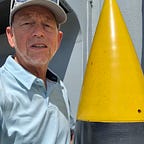How the US Army Saved Toyota from Bankruptcy
During the Korean war in July of 1950, the US Army issued an order for heavy trucks. It came weeks before Toyota would have filed for bankruptcy.
Background
After the capitulation of Japan in September of 1945, at the end of WWII, the United States occupied the country and worked to ensure Japan would never be in a position to make war in the future. In all, almost 1 million American soldiers served in the Japanese occupation from 1945 until it ended in 1952.
By the war’s end in late 1945, the US Navy had taken a severe toll on Japanese shipping, reducing the total tonnage shipped to Japan by an astounding 70%. Japan’s industrial base was starved for raw materials like iron, oil, rubber, tin, and aluminum ore. Japanese factories were subject to constant bombing by the B-29s of the US Army Airforce. In addition, Japan’s labor force was decimated by homelessness (over 10 million people)and disease from almost nine years of constant war.
In contrast, after hostilities ended, the US occupation was able to help Japan with its immediate needs of feeding the population. America’s superior logistics and extensive shipping network were able to provide needed food, medicine, and clothing. During the first post-war winter of 1945, the average Japanese had a diet of 1,100 calories. This was barely enough to sustain life, but enough to keep large segments from starving by consuming food delivered by the US. By 1947, Japanese caloric intake had climbed to 1,800 calories per day.
One of the main objectives of the US occupying force was to disable and disassemble the Japanese war machine’s industrial capacity. Eliminating the production of war machines like tanks and fighter planes would in effect block Japan from future aggression in the Eastern Pacific.
The immediate focus of the US effort was to reduce and in some cases eliminate major war industries like aircraft manufacturing, ammunition production and ship building. It eventually translated down to more mundane industries like car manufacturing and even appliances. Domestic truck and car manufacturing was prohibited under the framework of the original articles of the surrender and occupation.
Toyoda Manufacturing Company: a brief history
The Toyoda (original spelling here) manufacturing company was started in Aichi, Japan by Sakichi Toyoda in 1924. The company’s first product was an innovative automatic loom machine which had a unique feature that would cause the loom to stop production if it detected a fault in its production process.
Toyoda Automatic Loom Works expanded into the automobile and truck production in 1933–34, with its first product — the A1 — released in 1935.
It soon focused on truck production and released its G1 truck in 1936. Toyoda (which, in Japanese, means fertile rice paddies) changed its name to Toyota in 1937.
Toyota began manufacturing for the Japanese domestic market in earnest, assisted by the Japanese government’s prohibition of the import of US-manufactured automobiles during the 1930s.
Toyota was selected to be the main manufacturer for the Japanese Army’s need for heavy and light trucks during the early stage of the war.
The Cold War 1947–50
While the initial efforts of the US occupation were punitive, the Cold War stand-off with the Soviet Union in 1947 helped change the climate from one of occupier to one of alignment.
With the Cold War underway, by 1949 the US reversed its position and encouraged companies like Toyota to begin manufacturing to support the growth of the Japanese economy. This was intended to bolster Japan’s position as a democratic state, to serve as a regional deterrent to the increasingly belligerent Soviet Union. Toyota was back in the manufacturing business building trucks for the Japanese market and was issued contracts with the US Army to repair its trucks at US bases in Japan.
Unfortunately, while the Japanese domestic car market was getting revitalized, drastic measures by the American-created Dodge Plan were put in place. The goal was to reduce runaway inflation (over 700%) that was rampant and leading to unrest across Japan. These draconian measures dampened the Japanese economy and severely affected the demand for new vehicles. Unemployment increased and a recession occurred forcing many businesses including Toyota to begin layoffs and factory reductions.
The Korean War
On June 25th 1950, the North Korean Army crossed the 38th parallel under a massive artillery barrage and the Korean War began. Since Japan was the closest country with manufacturing capability close to Korea, the US contacted Toyota to produce trucks for the South Korean and US Eighth Army to be immediately shipped to the battlefield.
The Order
The initial order was for 200 trucks to be shipped by August, 400 in September with another 400 in October for a total of 1,000 Toyota BM trucks.
Another order by the US Army for 2,329 trucks was placed in August and on March 1, 1951, an additional order for 1,350 trucks.
The total value of these orders was 3.66 billion Yen.
The result
While the start of the Korean War was a source of strain on the US, it was a blessing for the Toyota Motor Company. With the influx of 100 million dollars from the US Army order, Toyota was able to avert bankruptcy.
The US Army benefitted as well. They were able to get well-made, highly-durable heavy vehicles to the theater of war in weeks not months. Japan is only 120 miles by sea from Pusan, South Korea.
This fortuitous order spelled the beginning of the renewal and growth of the Toyota Motor Company and provided a firm foundation ensuring the future of the global automobile leader.
